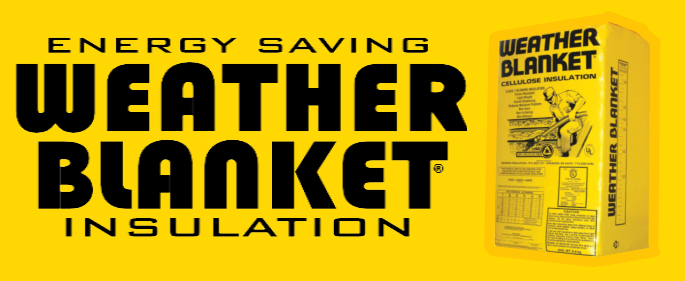Green Facts
Weather Blanket Insulation
Insulation Green Facts
Learn the following green facts from Weather Blanket Insulation.
- Cellulose takes less energy to make than any other insulation material. This is often referred to as "embodied energy" and calculates the total energy required to transport raw materials, manufacture, and distribute the product.
- Cellulose has the highest level of post-consumer recycled content in the industry - up to 85% recycled fibers. Fiber is the largest component in landfills and producing cellulose insulation diverts waste from the landfills thus saving valuable space.
- Cellulose insulation prevents the release of greenhouse gases (methane) as fibers decompose in landfills.
- Cellulose insulation can be locally produced. Using local recycling programs and independent recyclers and servicing communities close to home brings new meaning to the old slogan, "Think Globally, Act Locally."
Green Facts Table
| Type | Installation Methods | R-value per inch (RSI/m) | Raw Materials | Pollution From Manufacture | Indoor Air Quality Impacts | Comments |
|---|---|---|---|---|---|---|
| Cellulose | Loose-fill, wall-spray (damp), dense pack, stabilized | 3.6-4.0 (21-26) | Old Newspapers, telephone directories, borates | Negligible | Fibers and chemicals can be irritants | High Recycled content and very low embodied energy |
| Fiberglass | Batts, Loose-fill, semi-rigid board | 3.0-4.0 (15-28) | Silica sand, limestone, boron, recycled glass, PF resin or acrylic resin | Formaldehyde emissions and high energy use during manufacture | Fibers can be irritants | High embodied energy |
| Mineral Wool | Loose-fill, batts, semi-rigid or rigid board | 2.8-3.7 (19-26) | Iron-ore blast furnace slag, natural rock, PF binder | Formaldehyde emissions and high energy use during manufacture | Fibers can be irritants | High Embodied Energy; Rigid board can be an excellent foundation drainage and insulator |
| Cotton | Batts | 3.0-3.7 (21-26) | Cotton and polyester mill scraps (especially denim) | Negligible | Considered safe | Two producers so transportation pollution is higher than other insulation |
| Closed-cell spray polyurethane foams | Spray-in cavity-fill or spray-on roofing | 5.8-6.8 (40-47) | Fossil Fuels; HFC-24.5fa blowing agent; non-brominated flame retardant | High energy use during manufacture; global warming potential from HFC blowing agent | Quite toxic during installation (respirators or supplied air required); allow several days of airing out prior to occupancy | Very High embodied Energy |
| Open-celled, low-density polyurethane foam (Soy) | Spray-in cavity-fill | 3.6-3.8 (25-27) | Fossil Fuels and soybeans; water as blowing agent; non-brominated flame retardant | High energy use during manufacture | Quite toxic during installation (respirators or supplied air required); allow several days of airing out prior to occupancy | Very High embodied energy |


Share On: